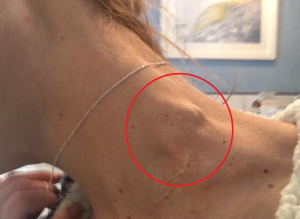
According to a study presented at the American College of Cardiology’s Annual Scientific Session Together With the World Congress of Cardiology, people with heart failure who wore a stick-on sensor that informed their doctor about fluid buildup in the lungs were 38% less likely to be readmitted to the hospital for heart failure complications within 90 days.
The device encourages clinicians to modify drugs early and stop issues from worsening by giving clinicians actionable information about a patient’s status remotely. The experimental technology might provide a less intrusive and more affordable substitute for implantable sensors because it is simple to apply and remove.
Heart failure occurs when the heart is too frail or stiff to adequately pump blood throughout the body. Due to frequent hospitalizations and untimely deaths, it affects approximately six million adults in the United States and is associated with substantial health care and economic expenditures.
Heart failure patients are frequently instructed to weigh themselves every day and to pay particular attention to any swelling as well as other symptoms including exhaustion, shortness of breath, and chest pain. Despite these precautions, many patients return to the hospital within months after their initial admission for heart failure, frequently as a result of lung fluid accumulation. By assisting patients and physicians in identifying early indications of fluid accumulation and taking appropriate action before hospitalization becomes necessary, the study aimed to lower hospital readmissions.
The thoracic fluid index, a gauge of fluid in the lungs, is determined by the wearer using radiofrequency signals and the Cor (“microcor”) system. It transmits data to the patient’s doctor and is patched onto the patient’s left side of the chest. 522 individuals who had been hospitalized for heart failure within the previous 10 days were enrolled for the trial. Each patient received a Cor monitor, which they were required to wear nonstop for 90 days.
In a control group, which included 50 percent of the patients, the Cor monitor was worn, but no data from the monitor was provided to the doctor. The research team used the data from this arm, which started first, to define a threshold separating between normal and increased thoracic fluid levels.






